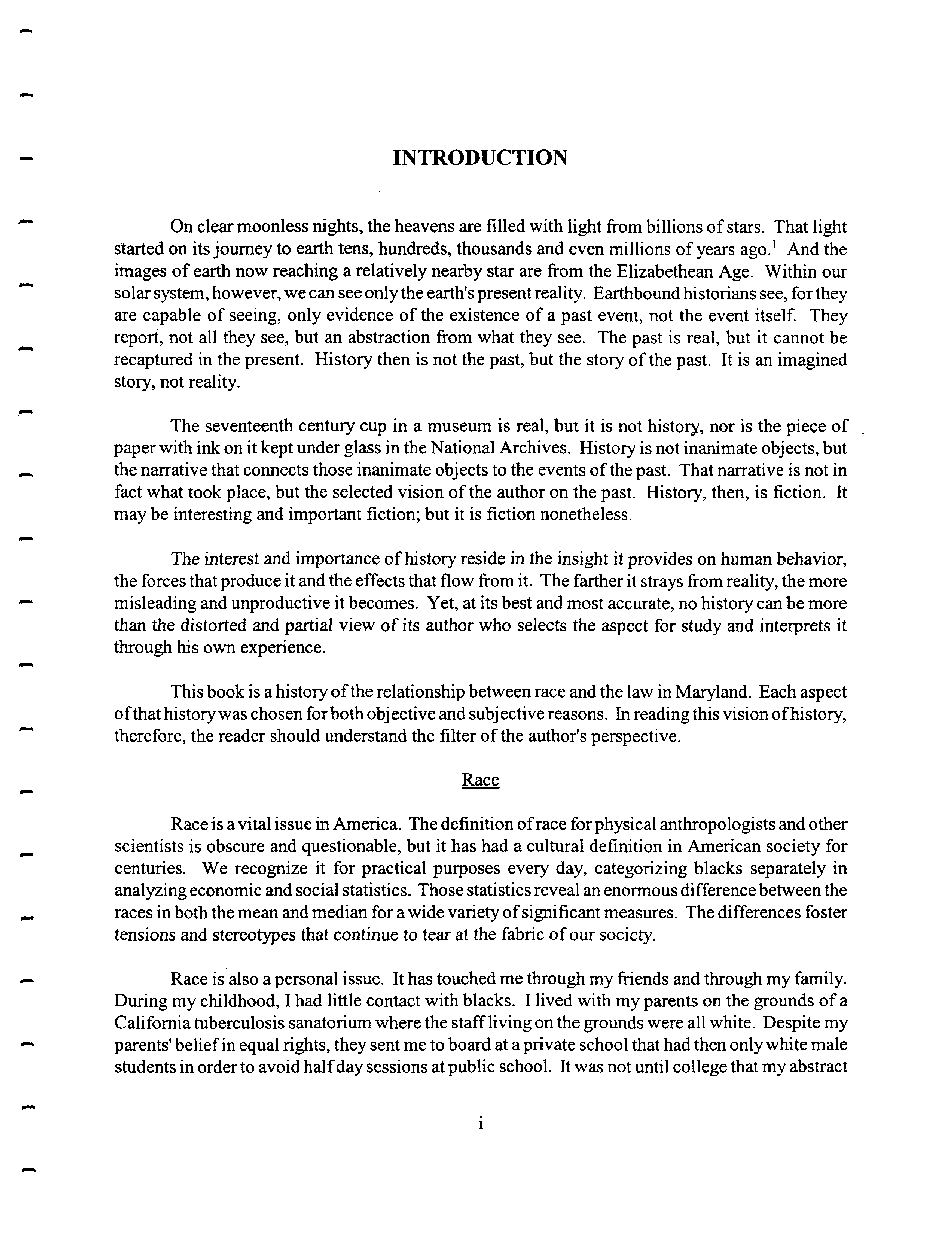|
INTRODUCTION
On clear moonless nights, the heavens are filled with light from billions of stars. That light
started on its journey to earth tens, hundreds, thousands and even millions of years ago.1 And the
images of earth now reaching a relatively nearby star are from the Elizabethean Age. Within our
solar system, however, we can see only the earth's present reality. Earthbound historians see, for they
are capable of seeing, only evidence of the existence of a past event, not the event itself. They
report, not all they see, but an abstraction from what they see. The past is real, but it cannot be
recaptured in the present. History then is not the past, but the story of the past. It is an imagined
story, not reality.
The seventeenth century cup in a museum is real, but it is not history, nor is the piece of
paper with ink on it kept under glass in the National Archives. History is not inanimate objects, but
the narrative that connects those inanimate objects to the events of the past. That narrative is not in
fact what took place, but the selected vision of the author on the past. History, then, is fiction. It
may be interesting and important fiction; but it is fiction nonetheless.
The interest and importance of history reside in the insight it provides on human behavior,
the forces that produce it and the effects that flow from it. The farther it strays from reality, the more
misleading and unproductive it becomes. Yet, at its best and most accurate, no history can be more
than the distorted and partial view of its author who selects the aspect for study and interprets it
through his own experience.
This book is a history of the relationship between race and the law in Maryland. Each aspect
of that history was chosen for both obj ective and subj ective reasons, hi reading this vision of history,
therefore, the reader should understand the filter of the author's perspective.
Race
Race is a vital issue in America. The definition of race for physical anthropologists and other
scientists is obscure and questionable, but it has had a cultural definition in American society for
centuries. We recognize it for practical purposes every day, categorizing blacks separately in
analyzing economic and social statistics. Those statistics reveal an enormous difference between the
races in both the mean and median for a wide variety of significant measures. The differences foster
tensions and stereotypes that continue to tear at the fabric of our society.
Race is also a personal issue. It has touched me through my friends and through my family.
During my childhood, I had little contact with blacks. I lived with my parents on the grounds of a
California tuberculosis sanatorium where the staff living on the grounds were all white. Despite my
parents' belief in equal rights, they sent me to board at a private school that had then only white male
students in order to avoid half day sessions at public school. It was not until college that my abstract
�
|

